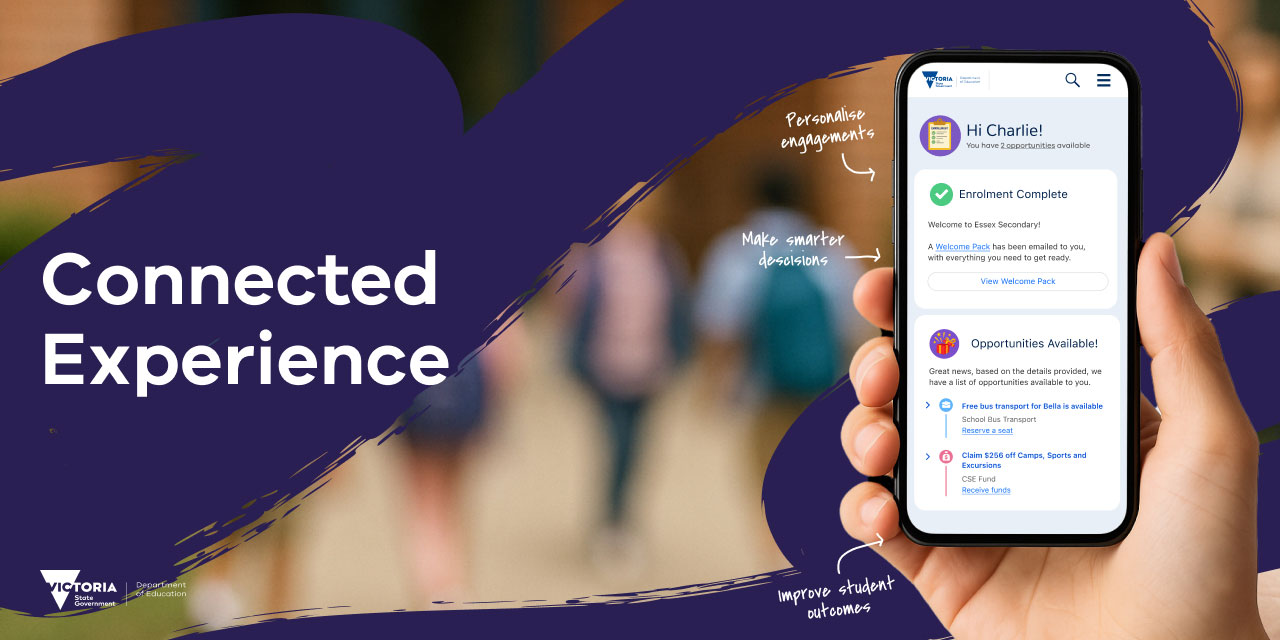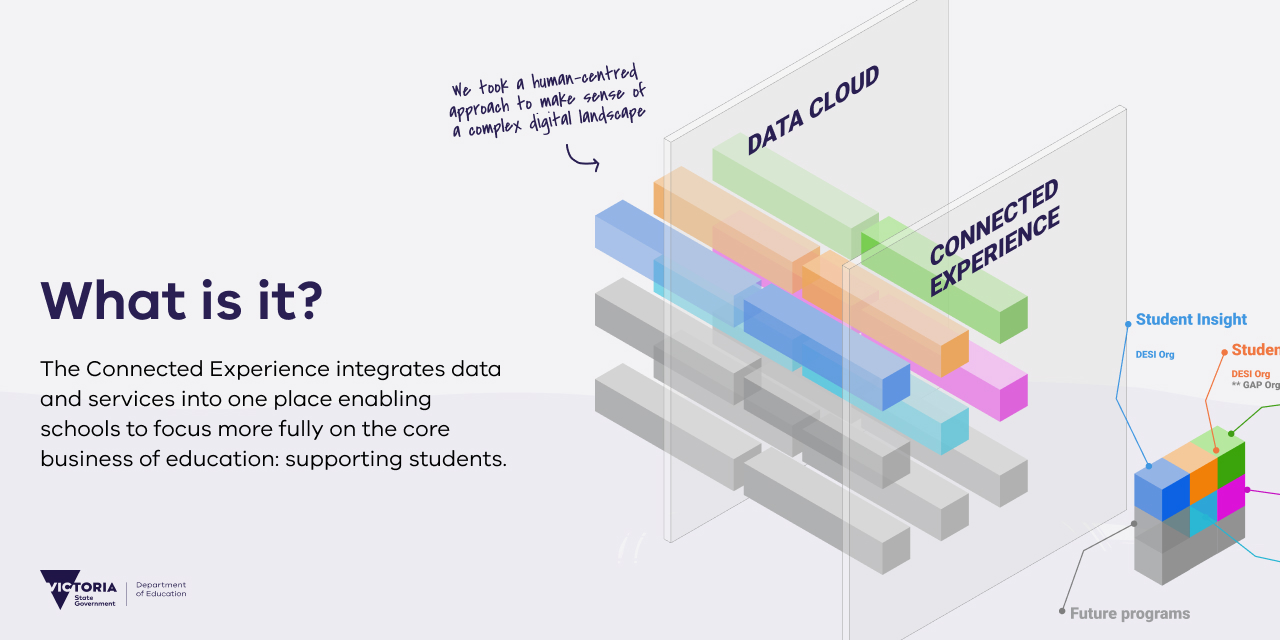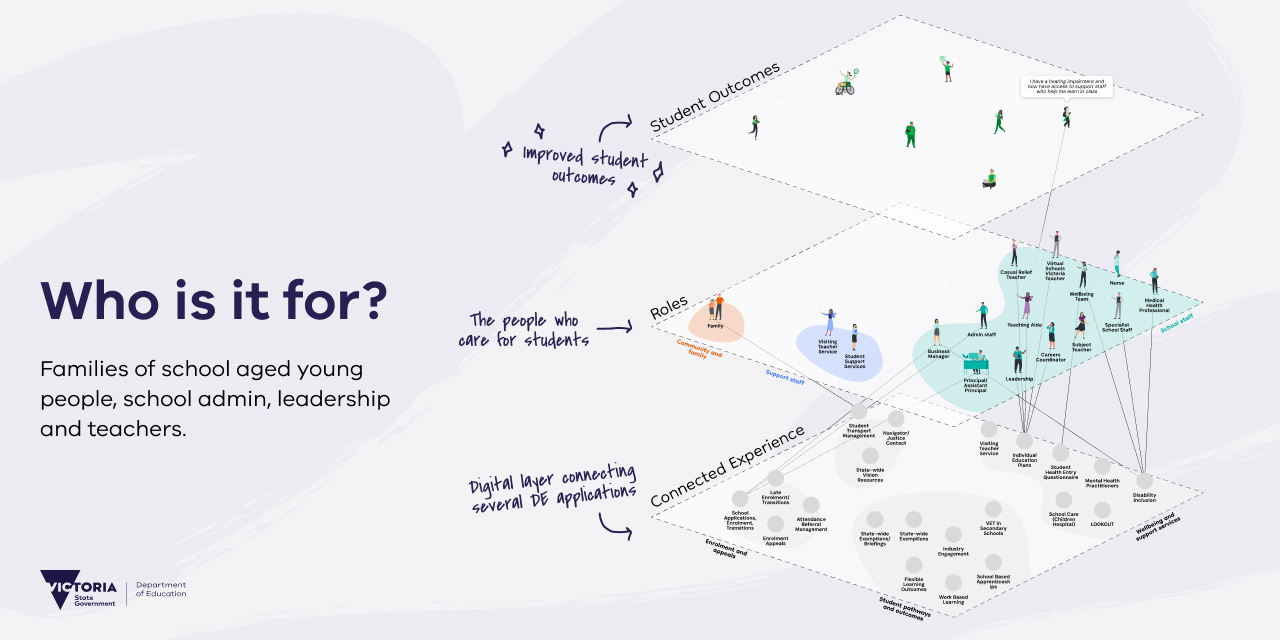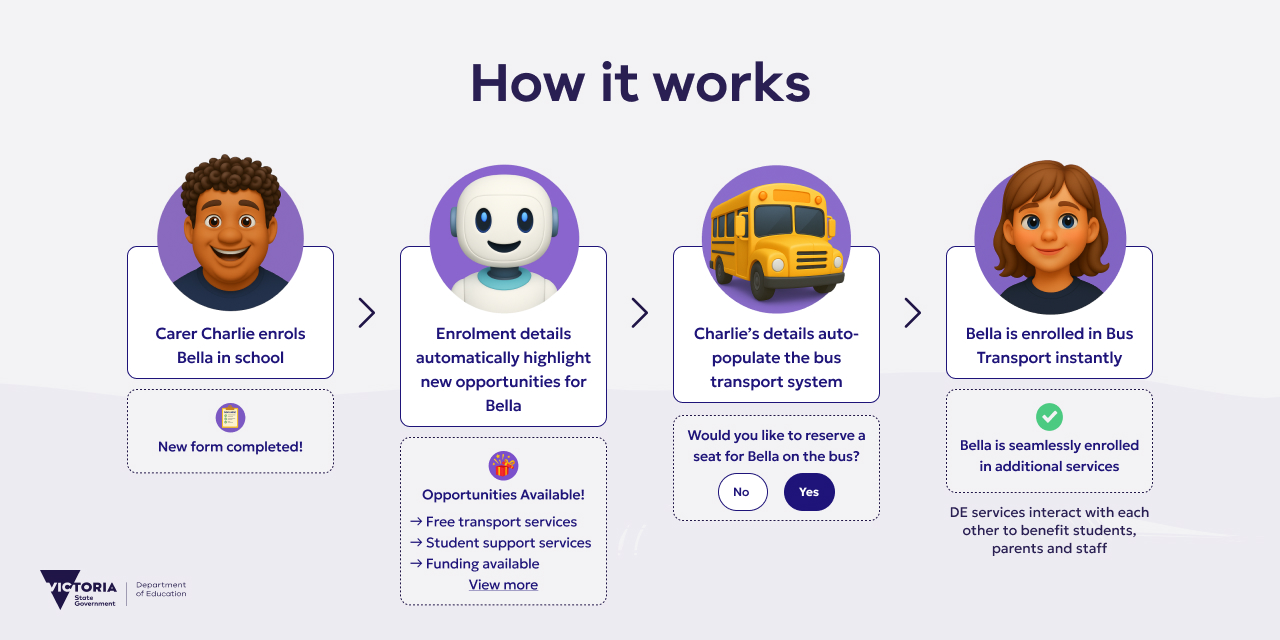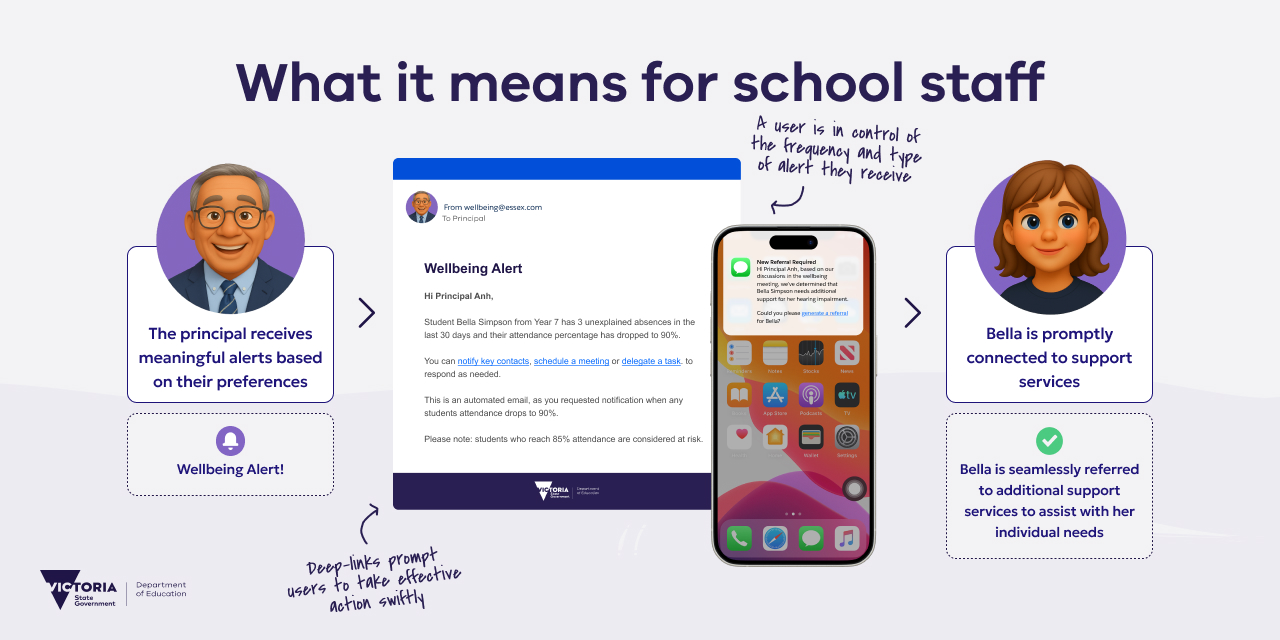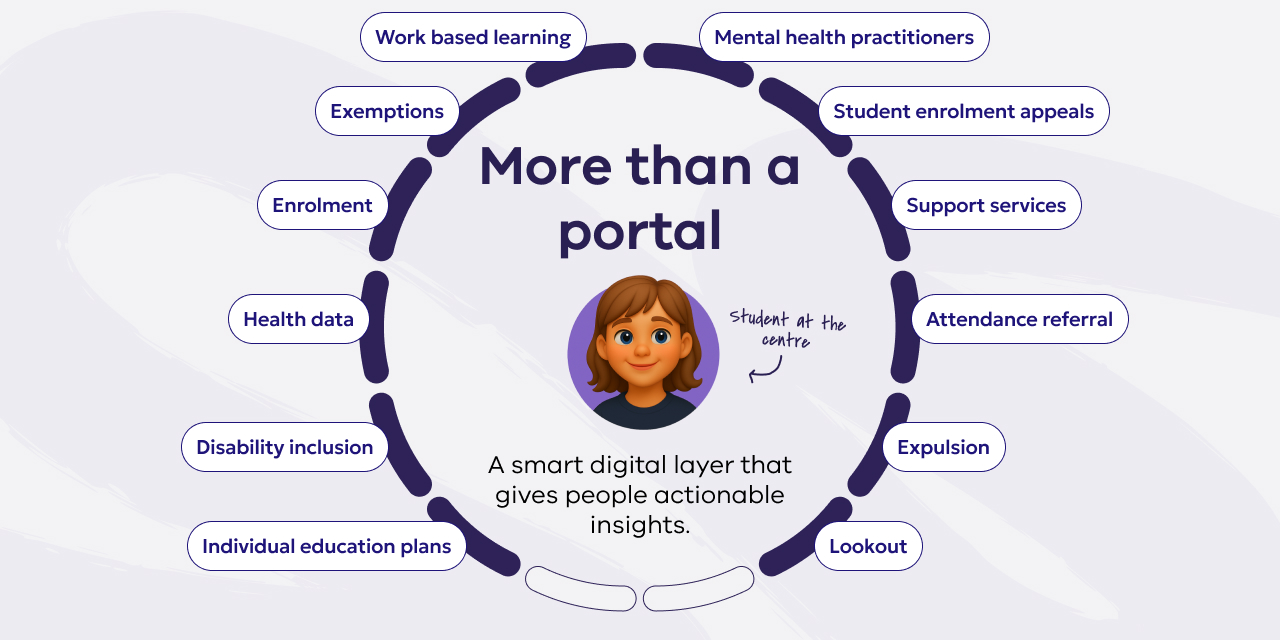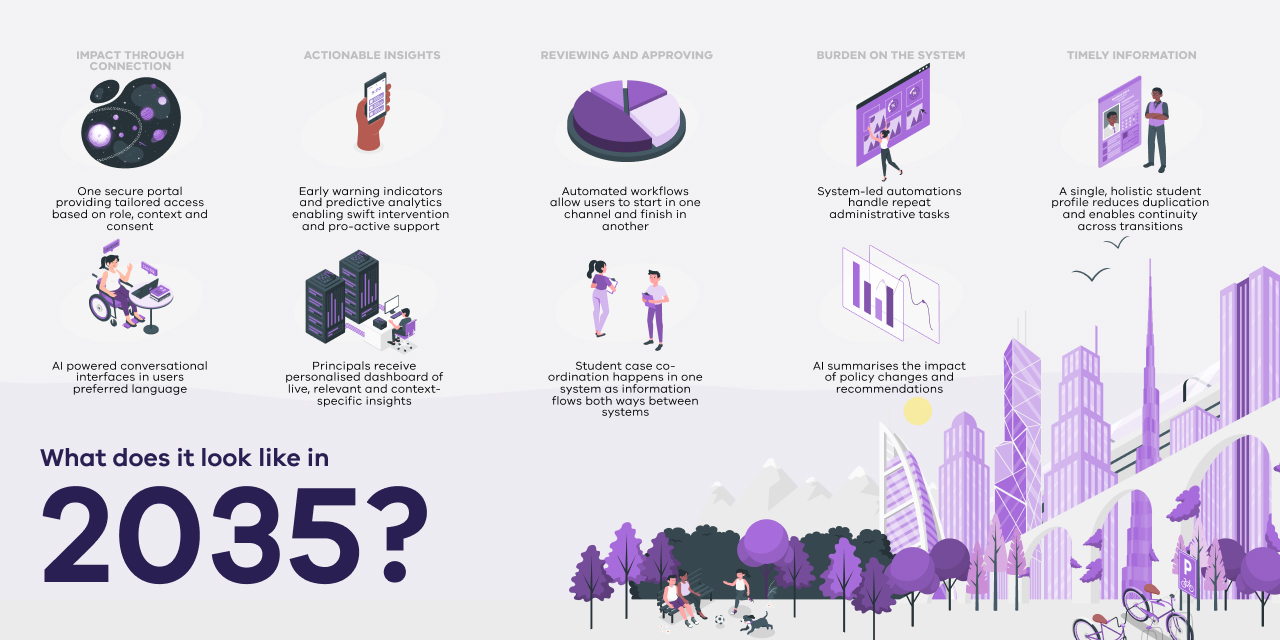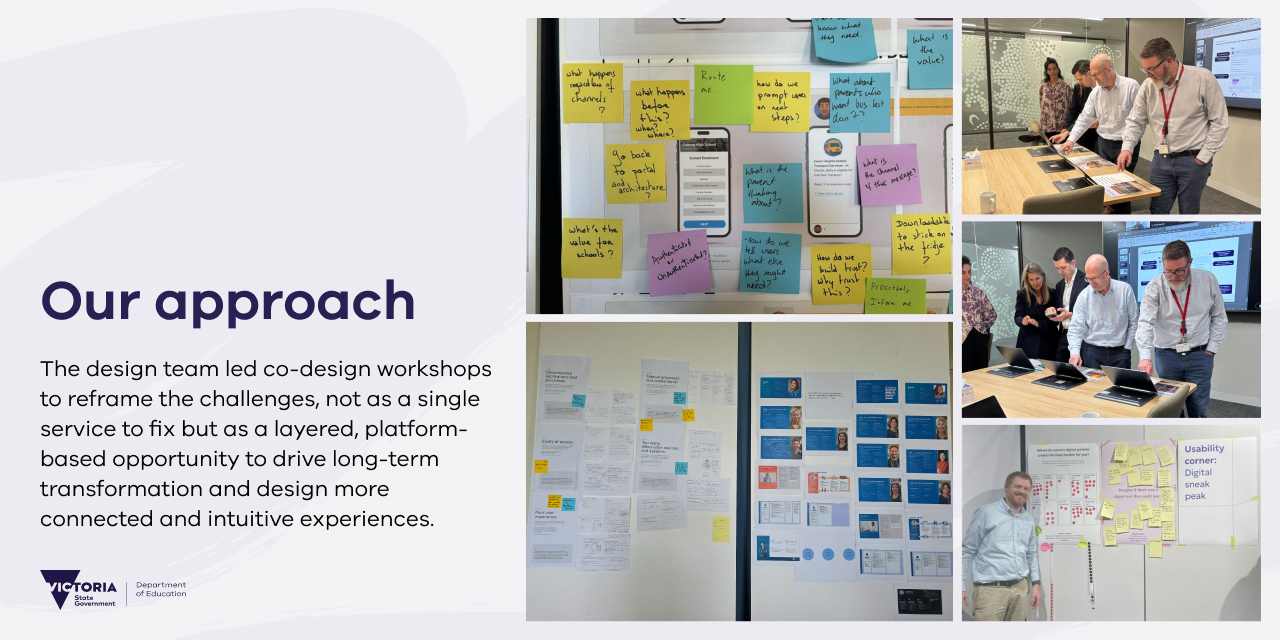A human-centred, design thinking process was applied to make sense of a complex, fragmented digital landscape and chart a strategic path forward.
The team began by conducting discovery research, systems mapping and service blueprinting across policy, operational and program services. This surfaced a clear picture of systemic pain points and duplicated effort across our fragmented landscape.
The design team led co-design workshops to reframe the challenge, not as a single service to fix, but as a layered, platform-based opportunity to drive long-term transformation and design more connected and intuitive experiences. We developed future-state concepts and design principles anchored in simplicity, trust, and the notion of ‘0% Engagement’.
Through iterative prototyping and testing, designers, architects and product leads developed future-state concepts that consolidated interactions into a role-based portal view, making it easier for school staff, parents and carers to access what they need. These prototypes illustrated how data, workflow automation and service touchpoints could be combined to reduce cognitive load and operational friction. Tactile prototypes allowed stakeholders to engage meaningfully with the vision.
The project exceeded the brief by not only delivering a roadmap and feasibility study but also establishing a repeatable strategic framework to guide future product decisions. It created alignment across siloed branches, generated new momentum for transformation, and helped secure senior sponsorship to support implementation.
Final design recommendations are now being embedded in the department’s delivery pipeline. Prototypes and user needs have informed the design of a unified portal experience, that is personalised, contextual, and user-friendly. Key design principles are being used to assess upcoming application releases, ensuring the experience is cohesive, scalable and centred on the needs of school staff and families.
Ultimately, the project demonstrated how design strategy can turn complexity into clarity – and shift a system from reactive delivery to purposeful, human-centred innovation.

